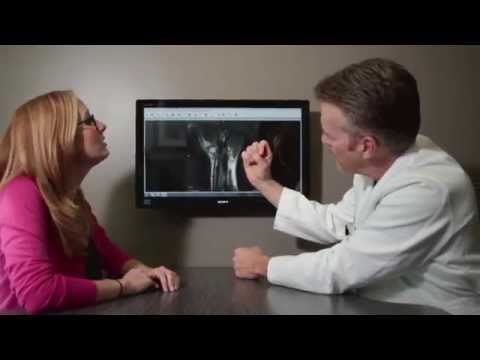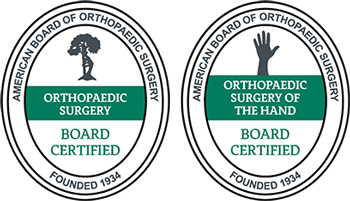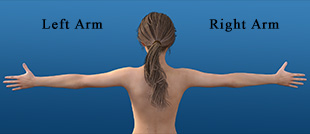Elbow Fractures in Children
Contents
- 1 What is an elbow fracture? How are they different in children?
- 2 What are the causes of Elbow Fracture in Children?
- 3 What are the symptoms of an Elbow Fracture in Children?
- 4 How are Elbow Fractures Diagnosed in Children?
- 5 How are Elbow Fractures Treated in Children?
- 6 How can Dr. Knight help you with Elbow Fractures in Children?
What is an elbow fracture? How are they different in children?
The bones of the elbow joint consist of the humerus of the upper arm and the radius and ulna of the forearm, whose bony articulations fit together like pieces of a puzzle, allowing hinge-like motion in the joint. The medial and lateral ligaments of the elbow lend support to the joint, along with the muscles and the tendons of the arm.
An elbow fracture occurs when forces applied to the bone are too strong for the bone to tolerate and the bone either bends and cracks or splits outright into two or more pieces. In children, elbow fractures are classified into six groups based on their location.
Supracondylar fractures occur in the humerus bone just above the elbow joint. Condylar fractures occur at the tip of the humerus bone where it forms the elbow joint at the knob of the elbow. Epicondylar fractures occur at the epicondyles of the humerus bone, or the elbow tip. Growth plate fractures occur in the soft, developing growth plates present in the humerus, radius, or ulna. The fracture may extend from an adjacent area into the growth plate, the fracture may dissect the growth plate, or it may occur at the union of the growth plate with the bone. Forearm fractures are usually located at the radial head, where the radius forms the elbow joint, and rarely at the ulna’s articulation with the elbow joint, known as the olecranon. A Monteggia fracture is a type of fracture/dislocation where the shaft of ulna sustains a fracture and the trauma also results in displacement of the radial head at the elbow.
The classification of elbow fracture is important to note because some locations, such as the supracondylar fracture, are associated with increased risk of nerve and blood vessel damage. Other fractures such as the condylar and growth plate fractures, can damage the growth plate potentially causing permanent deformity and stunted growth if not properly diagnosed and treated.
What are the causes of Elbow Fracture in Children?
In the pediatric population elbow fractures are most often a result of trauma. Older children will fall from a moderate height, such as the monkey bars on a playground, onto an outstretched arm. Toddlers usually fall from a lesser height, such as would be sustained from jumping on the bed and falling onto the floor with an outstretched arm. Direct trauma and physical abuse are other potential causes of elbow fracture in children.
What are the symptoms of an Elbow Fracture in Children?
Elbow fractures in children are accompanied by sudden onset of pain in the region of the elbow. The arm may appear deformed and be unable to move. If nerve damage is present, the child may complain of numbness. If damage to blood vessels is present, the arm or hand may appear cyanotic and bruising may occur.
How are Elbow Fractures Diagnosed in Children?
A careful history including the mechanism of injury will establish suspicion for a fracture. Physical exam will reveal a swollen, tender, and often immobile elbow joint. Imaging studies will confirm the diagnosis. Plain films are often followed by more advanced imaging such as MRI or CT scan to determine if nerve and blood vessel damage has occurred and to reveal any occult fractures not visible on X ray.
How are Elbow Fractures Treated in Children?
Elbow fractures may be treated surgically or non-surgically in children, depending on the classification, severity, and age of the child.
Non Surgical
If the bones involved in the fracture are properly aligned a long arm cast will be placed and X rays will be taken periodically throughout the healing process to confirm alignment and healing. Once the cast is removed, physical therapy will follow to strengthen the arm.
If the bones are minimally displaced in the fracture, closed reduction may be an option. The child is sedated and the Orthopedic Surgeon will manually move the bones into place. A cast and physical therapy will follow as described above.
Surgical
If the bones in the fracture are grossly displaced, or nerve, blood vessel, ligament or tendon damage has occurred, surgery will be needed. Open reduction and Internal fixation will be used to realign the bones and secure them in place with rods, pins, screws or mesh. Casting and physical therapy will follow to assure a full recovery.
How can Dr. Knight help you with Elbow Fractures in Children?
We looking forward to helping you live a more pain free life. Dr. Knight is one of the top hand doctors in Dallas. Visit Dr. John Knight at our Southlake hand and wrist center or Dallas office location.
Disclaimer
HandAndWristInstitute.com does not offer medical advice. The information presented here is offered for informational purposes only. Read Disclaimer

























